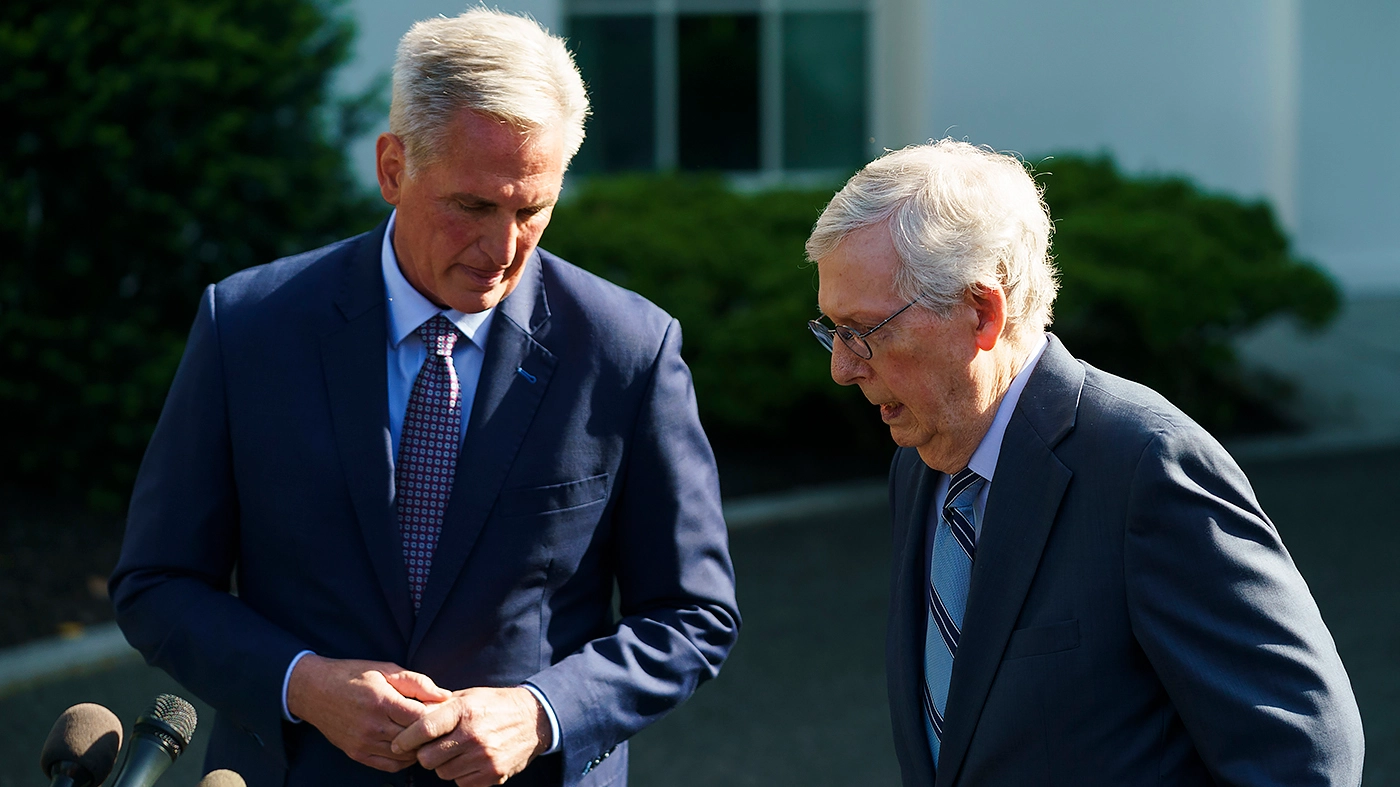Homebuyers and renters alike could feel relief later this year as home prices stabilize, mortgage rates decline and rent price growth continues to slow.
Economists expect the Federal Reserve to pause rate hikes for a time while it observes incoming economic data, some stemming from the banking crisis that led to tightened lending.
This could allow mortgage rates to fall even further from their high point last fall and give buyers a little breathing room to take advantage of home prices that are falling from their peaks.
But first, Congress must avert a crisis and act on the debt ceiling to avoid an unprecedented default — an event that could shatter the U.S. financial system, according to experts.
Debt limit looms over housing market
A U.S. debt default could be devastating for homebuyers as economists predict already-high buying costs would climb by double digits.
In this unprecedented worst-case scenario, the market would effectively freeze while mortgage rates soared and home sales plunged.
Home-buying costs could rise by 22 percent as mortgage rates sail past 8 percent in the event of a debt default, according to a new analysis from the real estate company Zillow.
“In broad strokes, it looks a lot like the impact of what happened early last year, when mortgage rates rose substantially from a little over 3 percent — up several points in the span of about half a year. That pulled the housing market way off, it turned it around from price growth to declining prices,” Tucker said.
But Tucker said a decline in home sales would be a bigger factor.
“In our forecast for what would happen in that default represents, by our estimate, 700,000 fewer home sales in the year and a half after that default,” Tucker said, adding that this presents hundreds of thousands of people on both sides of the transaction that are left out of the market.
Still, the U.S. has never failed to pay its debts, and housing affordability may be spared another blow.
What to expect for mortgage rates
The Fed’s rapid run of interest rate hikes over the past year has dramatically impacted mortgage rates, which reached historic lows early in the pandemic and fueled a buying boom.
Monetary tightening from the central bank via interest rate hikes trickled into the mortgage market and pushed rates higher.
Higher mortgage rates combined with tight inventory and sky-high purchase prices hampered affordability for many buyers, especially younger buyers searching for their first home.
Yet once volatile rates are settling after reaching their high mark at 7.08 percent late last fall, and the benchmark rate remains elevated. After falling for the third straight week, the average 30-year fixed rate mortgage is hovering just below 6.4 percent.
“This week’s decrease continues a recent sideways trend in mortgage rates, which is a welcome departure from the record increases of last year,” said Sam Khater, Freddie Mac’s chief economist.
“While inflation remains elevated, its rate of growth has moderated and is expected to decelerate over the remainder of 2023. This should bode well for the trajectory of mortgage rates over the long-term.”
Several economic forecasts show the 30-year fixed rate dipping into the low 6 percent range toward the end of the year. Data from the Mortgage Bankers Association projects rates could fall to as low as 5.5 percent.
Will there be more Fed rate hikes?
Federal Reserve Chairman Jerome Powell said early in the central bank’s series of interest rate increases that the housing market would need to go through a correction to make homes more affordable.
Home prices cooled significantly over the last year alongside inflation, and economists expect the Fed to hold off on further increases.
Zonda chief economist Ali Wolf told The Hill it is likely the Fed is done raising rates, at least for now.
“Fed officials have communicated that they want to track how their ten increases so far impact the economy, especially since there’s often a lag between higher rates and changes to economic growth,” Wolf said.
“If we see stronger than expected labor statistics or inflation figures, Fed officials may feel the need to raise rates again though,” she added.
Inflation cooled in April, hitting its lowest annual rate increase since 2021, according to the Consumer Price Index (CPI) released this week.
Zillow’s Tucker added that the Fed may take a break from hikes while it continues to assess the fallout from several regional bank failures.
“I do think they probably want to take some time to kind of watch the financial system digest the fallout from the recent bank closures and try to understand how the credit channels emanating from that are actually beginning to restrict credit a bit,” he said.
Rents are on track to keep falling
Asking rents slowed for the 11th consecutive month in April, rising by just 0.3 percent, data from real estate brokerage Redfin showed. At the same time a year ago, median asking rents rose by more than 16 percent.
Slowing price growth is due largely to the high number of units coming onto the market. Completions of buildings with five or more units jumped by 60 percent year-over-year in March to 484,000 on a seasonally unadjusted basis. And this fast-increasing activity has pushed the vacancy rate to 6.4 percent – the highest level in two years.
Redfin deputy chief economist Taylor Marr told The Hill he expects that the price growth slowdown in rents will continue but without offering much more financial wiggle room for renters.
“Rents are expected to move sideways into the second half of the year, avoiding large increases, but mostly not providing much more savings to existing renters,” Marr said in an email.
“The increases in supply (e.g., new multifamily construction) are expected to slow down by the end of the year and demand is holding steady — well below the surges during the pandemic as many new rental households were formed,” he added.
Another rental trend economists noted was the dip in rent growth as measured by the CPI.
RealPage senior vice president and chief economist Jay Parsons wrote in an analysis following the CPI’s release that although rent growth numbers dropped by just 0.1 percent from the previous month, it’s the direction that matters.
“This is a big deal for inflation and rate watchers (including apartment investors) because rent is the largest variable in the CPI’s largest category: shelter,” Parsons wrote.
Shelter, which makes up around 40 percent of core inflation, rose by 0.4 percent month-to-month in April, and it was the largest contributor to the overall monthly increase in inflation.
What’s in store for home prices?
Home prices grew rapidly during the pandemic housing boom – with double-digit gains seen in some markets. But price growth slowed over the back half of last year and into the spring buying season.
Moody’s Analytics expects single-family home prices to fall by 4 percent, according to a recent forecast.
Moody’s Analytics housing economist Matt Walsh said there are signs that the worst may be in the rearview. Yet he expects sales volumes to remain low relative to the pandemic as recent data indicates a weaker home buying season.
But he added that prices could decline from their high point even as sales volumes stabilize.
“While a 10% decline in house prices is significant, the incoming correction will be a far cry from the crash that followed the 2000s housing bubble,” he concluded.




